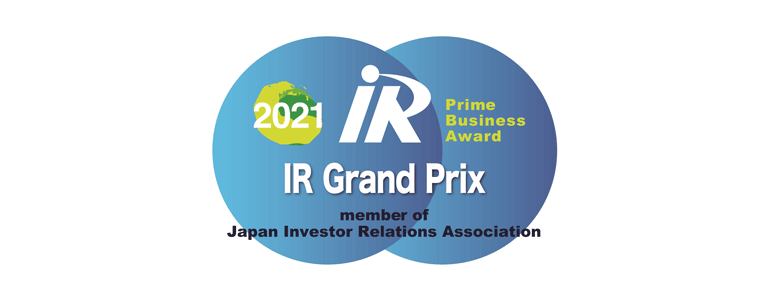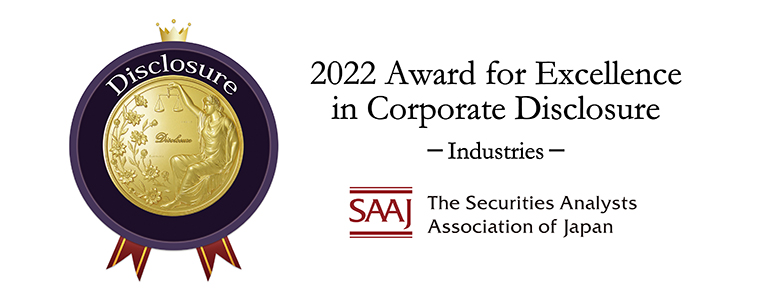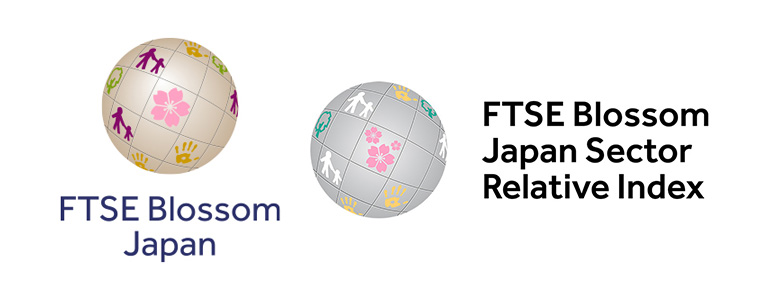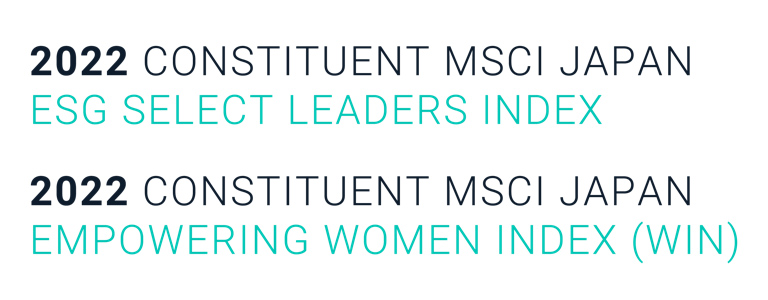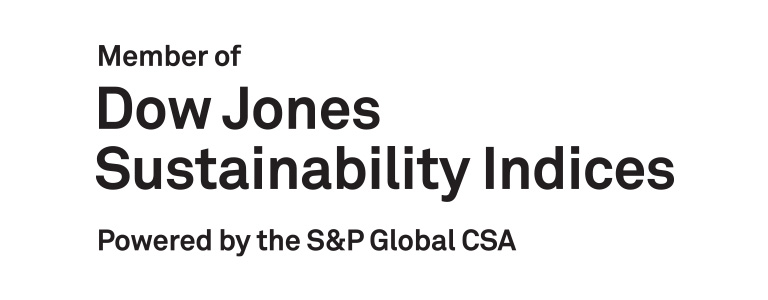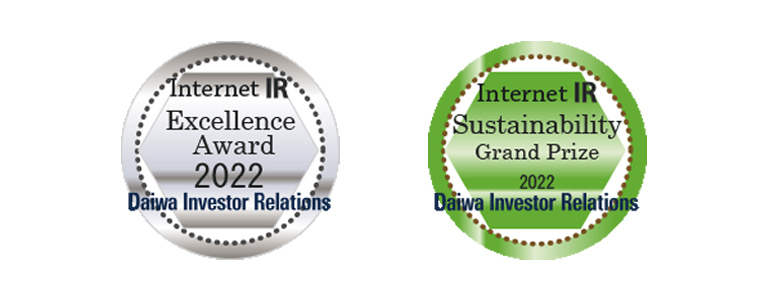Management Policy
Risk Factors
Risk Factors
For a wide variety of quantitative and qualitative risks which we face, each of the Corporate Staff Divisions cooperates by establishing various internal rules for risk management within their respective risk management areas, as well as conducting prior investigations and after-the-fact monitoring. We establish an integrated risk management system that has centralized control over the company-wide risks, which is centered around the Corporate Management Committee and the Portfolio Management Committee as an organization under the Corporate Management Committee. We identify important risks in light of the frequency of occurrence, expected damage scale, and company-wide risk tolerance and take corresponding measures. The important risks as of March 31, 2021 are as follows;
(1) Business Investment Risks
We are engaged in investment activities in various business by acquiring equity and shares. However, we are exposed to various risks related to business investments, such as the possible inability to recover our investments, exit losses, or being unable to earn the planned profits. Furthermore, we participate in various businesses directly or indirectly through joint ventures or by making strategic investments in other companies and business enterprises. The outcome of these joint ventures and strategic investments is unpredictable because:
- operational success is critically dependent on factors that are beyond our control such as the financial condition and performance of the partner companies or the strategic investees; or
- with respect to certain equity accounted investees, we may be unable to exercise adequate control over the management, operations and assets of the companies in which we invested or may be unable to make major decisions without the consent of other shareholders or participants due to lack of common business goals and strategic objectives with our alliance partners.
Any occurrence of these events could have a significant adverse effect on our operating results and financial condition.
We participate as a non-operator in many of exploration, development and production activities of mineral resources and oil and gas projects, which are becoming more significant to our operating results and financial condition. Under these circumstances, we carefully consider the business potential and profitability of projects based on the information and data provided by operators, who has the discretion to control operations of such projects, including decision-making for development and production. An operator’s failure in managing those projects may adversely affect our operating results and financial condition significantly.
For these risks, new investment decisions are made based on analysis of qualitative factors as well as the required profitability ratio and other quantitative standards and we perform efficient asset replacement through our periodic monitoring each purpose of all investments and our determining turnaround plans or exit policies for unprofitable businesses and businesses falling below withdrawal standard cutoffs. In addition to the risk amount carried by assets on our consolidated statements of financial position, we assess and periodically monitor the amount of off-balance-sheet risk, such as market risk and guarantees, using a set standard and periodically stress test on our risk adjusted assets (*) for various scenarios, verifying the impact on the risk assets to shareholders’ equity ratio.
(*) Risk adjusted assets refer to the maximum loss exposure and is calculated by multiplying assets including trade and other receivables, other investments, fixed assets and off-balance-sheet items such as guarantees by risk weights, which we have determined individually based on the potential risk of loss.
(2) Country Risks
Various types of businesses worldwide sometimes expose us to risks that could cause our receivables, investment, loans and other claimable assets extended to our customers and other parties in a foreign country to become uncollectable and/or the value of our inventories, fixed assets and other assets in the country to deteriorate due to government actions or changes in the political, economic or social conditions in the respective foreign country. Furthermore, some of our business activities may be exposed to concentration risk in particular industries located in specific regions or countries. For example:
- In Brazil, Chile and Russia, we have significant interests in the exploration, development, production and liquefaction of mineral resources and energy.
- In Malaysia, we have significant interests in the healthcare business across a large part of Asia.
- In Mozambique, we have significant interests in the development, production and liquefaction of energy.
Therefore, for country risks, we implement appropriate risk hedging measures according to the content of the project, such as usage of financing from Export Credit Agencies.
And we periodically grasp risk exposures such as receivables, investments, loans, and guarantees by every country that we hold positions as well as monitor for the country risk situation for each country except, in principle, for developed countries and implement risk-control policy at least once a year or whenever deemed necessary. Furthermore, our regular monitoring of our overall portfolio confirms the appropriateness of asset size in accordance with each country as well as each business area.
(3) Risks Regarding Climate Changes
Initiatives to reduce greenhouse gases, which are said to be the root cause of climate change and global warming, are undertaken globally, such as adoption and ratification of “Paris Agreement” at the 21st Conference of Parties (COP21) in United Nations U.N. Framework Convention on Climate Change.
As to physical risks that are likely to occur in the short term, among extreme weather conditions which have been increasing recently due to climate change, intense storms, especially hurricanes and cyclones, which are in the Atlantic and South Pacific oceans, respectively, may have an adverse effect on operations. In case production sites and infrastructure used for shipments such as roads, railways and ports, are seriously damaged, operations and shipments could stop for indeterminate periods until restoration work is completed. Therefore, our business operations are exposed to non-operation risk in the entire supply chain, such as the inability to receive the supply of raw materials, in the case that not only our investment but also our customers are seriously damaged. For these risks, we implement measures, such as insurance coverage, establishing a crisis management policy, and strengthening equipment, however, physical risks cannot be completely avoided and may have a significant adverse effect on our future operating results and financial condition.
Transition risks that are likely to occur in the medium-to-long term includes:
- Policy and Legal Risks: Changes in the energy and power source mix due to government policies in each country and introduction of government-imposed greenhouse gas emission restrictions including imposition of carbon tax, and emission credit could have a significant adverse effect on our operating results and financial condition of our businesses that use fossil fuel and emit a large amount of greenhouse gasses.
- Technology Risks: Introduction of new technologies that respond to climate change may cause changes in the supply and demand of existing products and services and deterioration of our interests, and could have a significant adverse effect on our future operating results and financial condition.
- Fund Procurement Risks: Low-carbon policies of financial institutions and insurance companies may cause risks that affect the procurement of funds.
We bear in mind the various climate change scenarios offered by the International Energy Agency, etc., and analyze the impact of such scenarios on our businesses. Over the long term, maintaining the existing portfolio could have a significant adverse effect on our operating results and financial condition. Therefore, to build an asset portfolio that can maintain and improve profits even under the 2℃ scenario by 2030, as part of Mitsui’s Goals in 2050, we set a goal of achieving net-zero emissions by 2050, with a 2030 milestone of reducing GHG impact by 50% compared to 2020.
Moreover, we introduced an internal carbon pricing system in order to increase resilience, and to accelerate the development of projects that contribute to reducing GHG emissions. For new business projects, we have added impact analysis of the 2.0℃ scenario into the project screening factors, as well as the validity of countermeasures in the event these risks are realized. We also apply the internal carbon pricing system for assessing risks in existing projects.
(4) Commodity Market Risks
We are engaged in trades in and, as the case may be, production of a variety of commodities in the global commodities market including mineral resources and energy products. Among others, operating results from our mineral resources and energy producing activities account for significant portion in our overall operating results. These commodity markets can be volatile in a short period or seasonally fluctuate by various factors such as imbalance of supply and demand, economic fluctuation, inventory adjustment, and exchange rate fluctuations. These factors are beyond our control.
Commodity price fluctuations directly affect revenues from the equity share of production at our subsidiaries and equity accounted investees. For the year ending March 31, 2022, we estimate that the impact of a change of US$1 per barrel in the crude oil prices and US$1 per ton in the iron ore prices on profit for the year attributable to owners of the parent would approximately be ¥2.5 billion and ¥2.2 billion, respectively.
We have formulated market risk management policies including commodity market risk and have established management systems at several levels. In particular, regarding commodity market risk, Chief Operating Officers have the primary responsibility of establishing risk management policies that prescribe the setting of limits on positions and losses, as well as prescribing management systems at each business unit. They also have the responsibility of obtaining the approval of our executive officers in charge of risk management, and carrying out management and reporting in accordance with such approval. In addition, risk management sections, which are independent from trading sections, monitor, analyze and evaluate market risks and periodically report to the executive officers in charge. For the year ended March 31, 2021, although the commodity market saw fluctuation due to various factors including the COVID-19 pandemic, no major loss was recorded by the short-term price fluctuation in the trading businesses as a result of taking corresponding measures under our planned market risk management policies.
Furthermore, we use derivative instruments, such as swap contracts, as hedging instruments for hedge accounting to fix the expected future cash flows from forecasted transactions in marketable commodities.
The unexpected market fluctuations may adversely affect our business, operating results and financial condition significantly, as follows:
- At businesses such as mineral resources and/or energy development projects, in which large amounts of investment has been made, it may occur that the invested amount is not recoverable through sales of the produced products due to a fall in price or we may have difficulty in divesting our proprietary equity at a reasonable price.
- A decline in the value of our investments in LNG projects and other investments which are recognized to designate as at fair value through other comprehensive income (“FVTOCI”), could adversely affect our comprehensive income.
(5) Foreign Currency Risks
We are exposed to the exchange risk of assets and liabilities represented in foreign currencies. Exchange rate fluctuations may reduce the value of investments in overseas subsidiaries and associated companies as well as in FVTOCI, and adversely affect our accumulated other comprehensive income and financial condition significantly.
For the year ending March 31, 2022, we estimate that the impact on profit for the year attributable to owners of the parent of a change of ¥1 per US$ and ¥1 per AU$ in the USD/JPY and AUD/JPY would approximately be ¥2.6 billion and ¥2.4 billion, respectively.
We have formulated market risk management policies including foreign currency exchanging risk and have established management systems at several levels. In particular, regarding foreign currency exchange risks, Chief Operating Officers have the primary responsibility of establishing risk management policies that prescribe the setting of limits on positions and losses, as well as prescribing management systems at each business unit. They also have the responsibility of obtaining the approval of our executive officers in charge of risk management, and carrying out management and reporting in accordance with such approval. In addition, risk management sections, which are independent from trading sections, monitor, analyze and evaluate foreign currency risk and periodically report to the executive officers in charge.
Furthermore, we use derivative instruments, such as foreign exchange forward contracts and currency swap agreements, as hedging instruments for hedge accounting to fix the expected future cash flows from foreign-currency-denominated receivables and payables resulting from selling and purchasing activities in currencies other than the local currency. We also use foreign-currency-denominated debt in order to mainly hedge the foreign currency exposure in the net investment in foreign operations.
(6) Stock Price Risks of Listed Stock We Hold
We invest marketable equity financial assets which are exposed to risk of stock price fluctuations, for the purpose of creating business opportunities, or building, maintaining, or strengthening business and collaborative relationship. At March 31, 2021, our marketable equity financial assets recognized to designate as FVTOCI were carried at a fair value of ¥1,080.1 billion, representing 8.6% of our total assets. While we periodically review our investment portfolio, a decline in the equity securities market could adversely affect the value of our investment portfolio and financial condition significantly due to the decline of other comprehensive income.
We have formulated market risk management policies including stock price risk and have established management systems at several levels. In particular, we manage the stock price risk by analyzing factors of market capitalization fluctuations.
(7) Credit Risks
We are exposed to large-scale counterparty credit risks, including the following:
- While many of our customers purchase products and services from us on credit, we may also provide financing programs or debt guarantees for customers associated with sales contracts. At March 31, 2021, the balance of current trade and other receivables (less loss allowance - current) was ¥1,812.0 billion, representing 14.5% of our total assets. The balance of loss allowance - current was ¥22.2 billion.
- We engage in significant project financing activities as a lender or guarantor whereby we assume repayment risk.
We manage credit risks through the management of commitment lines of credit approved by an appropriate person with authority and through monitoring past-due status of credit. In addition, we require collateral and/or other forms of security from counterparties as necessary. For the current year, we have received requests to change the payment terms or reschedule the payment dates by several customers due to the COVID-19 pandemic. As a result of following the planned policy, no major impact was recorded for our operating results. There was only limited impact for our financial condition.
Even if the measures for credit risk are implemented, it is not possible for our credit risk management policy to completely eliminate risks relating to the deterioration of the financial positions of our counterparties. Furthermore, factors such as insolvencies among our customers caused by liquidity crises, sudden falls in real estate market or stock market prices, or increases in company bankruptcies may make it difficult for us to collect receivables and adversely affect our future operating results and financial condition significantly.
(8) Risks Regarding Fund Procurement
Turmoil in financial markets, a downgrade in our credit ratings or significant changes in the lending or investment policies of our lenders or institutional investors could result in constraints on our fund procurement and an increase in funding costs, and could have an adverse effect on our financial position and liquidity.
We obtain long-term funds (those with maturities of around 10 years), and at the same time, we minimize our refinance risk by deconcentrating the amount of long-term debt to be repaid each fiscal year. We also hold sufficient cash and cash equivalents in order to maintain liquidity to flexibly meet capital requirements and to minimize the harmful effect of a deteriorated financial market on future debt-service requirements.
(9) Operational Risks
In each business areas, namely, Mineral & Metal Resources, Energy, Machinery & Infrastructure, Chemicals, Iron & Steel Products, Lifestyle and Innovation & Corporate Development, the Company and its consolidated subsidiaries engage in a diversified range of services, including trading, manufacturing, transport, and financial services involving various commodities. Making full use of the global hub network which is centering on the Company, and its ability to gather information, the Company and its consolidated subsidiaries engage in a wide range of initiatives that include development of natural resources and infrastructure projects, business investment in relation to the environment, new technologies, next-generation power and wellness, and value creation that leverages digital tools. These businesses are exposed to various operational risks such as fires, explosions, accidents, export and import restrictions, and natural disasters. The event of these accidents and disasters could significantly and adversely affect our operating results and financial condition.
Once an environmental accident occurs, as the owner of mineral resource and energy interests, regardless of the degree of our contribution to such accidents or acts of negligence, we may be imposed to bear fines or payments for compensation from environmental authorities or other concerned parties, which may adversely affect our operating results and financial condition significantly, even in situations where we have no involvement at all in actual operations as a non-operator. These fines and/or compensation payments may include clean-up costs, compensation for environmental damages, compensation for health hazard and/or property damage to those affected by the accident, compensation for absence from work and/or for loss of earnings.
We consider risk measures for risk mitigation and damage prevention and have insurance for accidents, disasters, etc. in the extent possible and appropriate, however they may not be able to cover all the damage.
(10) Risks Regarding Employee’s Compliance with Laws, Regulations, and Internal Policies
Due to our size, as well as the operational and geographic breadth of our activities, our day-to-day operations are necessarily de-centralized. As a result, we cannot fully ensure that our employees comply with all applicable laws and regulations as well as our internal policies. For example, our employees may engage in unauthorized trading activities and exceed the allotted market risk exposure for various commodities or extend an unauthorized amount of credit to a client, which, in either case, may result in unknown losses or unmanageable risks. Moreover, our employees could engage in various unauthorized activities prohibited under the laws of Japan or other jurisdictions to which we are subject, including export regulations, anticorruption laws, antitrust laws and tax regulations.
We undertake various efforts such as strengthening the compliance framework on a global group basis, sending out the messages from management to employees continuously and repeatedly, establishing channels for reporting compliance-related matters within or outside of the administrative chain of command, fostering a “speak up” culture, handling any cases of compliance violations strictly.
However, such efforts are not possible to prevent misconduct by our employees completely. Depending on its nature, employees’ misconduct could have a significant adverse effect on our business activities, reputation, operating results and financial condition.
(11) Risks Regarding Information Systems and Information Securities
As the operation of our global communication network progresses and with the recent worldwide cyber-attacks on the increase, it is important to properly operate the IT system, grasp the information value and handle it properly. We enhance the safety and security of information systems by internal control through development of related regulations to secure properly confidentiality, integrity, and availability on information and information systems for us and our consolidated subsidiaries. We reduce risks on data breaches by improved guidelines for better risk management, conduct internal training regularly, and tackle external threats with various measures, including the security monitoring of our IT networks.
For the current year, we are required to work from home globally due to the COVID-19 pandemic. As a result of digital environmental maintenance that we have been working on for several years, our sustainable business continuity was secured. However, we cannot eliminate all the possibilities of distraction or leakages of confidential business information triggered by unexpected serious IT system troubles, and unforeseeable threats against our IT system infrastructure or communications networks. Such situations could seriously reduce our operational efficiency or jeopardize our ability to maintain or expand our business activities, which may have a significant adverse effect on our business, operating results and financial condition.
(12) Risks Relating to Natural Disasters Terrorism, Violent Groups, and Infectious Disease
Earthquake, heavy rain or flood, terrorism, infectious disease, power shortage, etc. in the countries or regions where we develop business activities could adversely affect our businesses significantly.
The global travel bans and other factors associated with the COVID-19 pandemic from 2020 onwards have had a significant impact on supply / demand and commodity prices in the various business fields in which we operate, and the operating results for the fiscal year ended March 31, 2021 recorded a decrease in profits compared to the previous year. Our forecasts for the fiscal year ending March 2022 was announced on the premise that infectious diseases are gradually shrinking along with the widespread rollout of vaccinations. However, there are regional and industry wise disparities in the tempo of economic recovery from the COVID-19, and the speed of business recovery may be slowed down in the event that the infection re-emerges due to delays in the widespread rollout of the vaccinations or unexpected spread of mutated variants. In addition, if the decline in demand continues over the medium to long term, it may have a significant adverse influence to our operating results and financial condition.
We have implemented measures such as creating a Business Continuity Plan (BCP), developing a disaster contingency manual, introducing a safety confirmation system for employees, reinforcing earthquake resistance and conducting emergency drills. However, despite these measures, there is no assurance that all damage and impact can be completely avoided, and they may adversely affect our operating results and financial condition significantly.
In addition to the important risks as of March 31, 2021, we recognize the following risk factors which may have an adversely effect on our operating results, financial condition, and cash-flow. However, these do not cover all risk factors.
General Risks That Are Not Unique to Our Own Risk
- Risks of Changes in Global Macroeconomic Factors
-
Our global business activities are affected by economic conditions both globally and regionally. Among other locations, we are particularly vulnerable to downward economic trends in Europe, Japan, China, the United States and emerging countries. An economic downturn may cause a reduction in the flow of goods and materials, a decline in consumer spending and capital investment, and subsequently a decline in demand from our customers for our products and services, which may have an adverse impact on our business, operating results and financial condition.
- Risks Associated with Laws and Regulations
-
Our business operations are subject to extensive laws and regulations in Japan and other countries throughout the world. Our operations are subject to laws and regulations governing, among other things, commodities, consumer protection, business and investment approvals, environmental protection, currency exchange control, import and export (including restrictions from the viewpoint of national and international security), taxation, and antitrust. For instance, many of our infrastructure projects in developing countries are subject to less developed legal systems. As a result, our costs may increase due to factors such as the lack of a comprehensive set of laws and regulations, an unpredictable judicial system based on inconsistent application and interpretation of laws and regulations, and changing practices of regulatory and administrative bodies. For example, we are subject to sudden and unpredictable changes to: tariffs for products and services that we provide; technical specifications with respect to environmental regulations; income tax and duty rates; and foreign currency exchange controls with respect to repatriation of investments and dividends.
We are subject to complex sets of environmental regulations in Australia, Brazil, Chile, Russia, and the Middle East. These laws and regulations may require us to perform site clean-ups; require us to curtail or cease certain operations; impose fines and payments for significant environmental damage; require us to install costly pollution control equipment; and require us to modify our operations.
Furthermore, while we are involved in the exploration, development and production activities through various contractual arrangements for concessions, the contracts may not be honored or extended when they expire. Moreover, the regulatory bodies of these areas may unilaterally intervene or even alter the contractual terms of our oil and gas as well as mineral resource producing operations involving production rates, pricing formulas, royalties, environmental protection cost, land tenure or otherwise. If these regulatory bodies unilaterally alter such contractual terms, or if the cost of complying with revised or newly established laws and regulations increases, our business, operating results and financial condition could be adversely affected. Development of projects may face schedule delays than originally planned, due to difficulties in technical conditions, procurement of materials, financial conditions and government regulations including environmental aspect.
- Risks Due to Competition
-
Products and services we provide are generally under competition. Other Japanese general trading companies as well as other competitors which engage in similar business activities in various fields may have stronger business associations and relationships with our customers, suppliers and business partners in both domestic and global markets; or stronger global network and regional expertise, diversified global customer bases, greater financial engineering skills and market insights.
Unless we can successfully continue to meet the changing needs of our customers by providing them with innovative and integrated services in a cost effective manner, we may lose our market share or relationships with our existing customers, and we may have an adverse effect on our operating results and financial condition.
- Risk Regarding Limitation of Human Resources on Business
-
In new businesses, we are investing human resources that are capable of planning and evaluating business, executing projects and managing and supervising workforce. However, in certain business areas, we may have a shortage of required human resources, which could cause a loss of opportunities to start new businesses, which in turn may adversely affect our future business, operating results and financial condition.
Recognized Risks, but the Impact Is Not Significant
- Interest Rate Risks
-
We are exposed to risks associated with interest rate fluctuations, which may affect our overall operational costs and the value of our financial assets and liabilities, particularly our debt obligations from the capital markets and borrowings from financial institutions. An increase in interest rates, especially in Japan and the United States, may adversely affect our operating results.
- Risks Regarding Pension Cost and Defined Benefit Obligations
-
Declines in the market value of domestic and foreign government bonds, other debt securities and marketable equity securities would reduce the value of our pension plan assets. A decline in the value of our pension plan assets or an increase in our unfunded defined benefit obligation could adversely affect our operating results and financial condition due to the decline of other comprehensive income and retained earnings.
The preparation of the consolidated financial statements in conformity with IFRS requires management to make estimates and assumptions that affect the carrying value of assets and liabilities and the disclosure of contingent liabilities at the date of the consolidated financial statements and the reported amounts of revenues and expenses during the reporting period.
Risks inherent to Japan
- Possibility of difference between the actual dividend amount and the forecasts announced prior to the record date
-
The customary dividend payout practice of publicly listed companies in Japan may significantly differ from the practice widely followed in other markets. Our dividend payout practice is no exception.
We ordinarily announce a certain dividend payout policy at the beginning of each fiscal year and also provide guidance for annual dividends based on the forecast of our financial results including profit for the year. Interim dividends are paid to shareholders of record on September 30 of each fiscal year after reviewing our financial results during the first six months of each fiscal year as well as our forecast of our financial results during the last six months of the same fiscal year. The decision of declaration and payment is solely a matter of discretion of our Board of Directors, and such a decision may be made after the September 30 record date, and thus may differ from our guidance provided prior to such record date.
The amount and payment of the year-end dividend are determined by our Board of Directors based on the actual financial results including profit for the year. If we propose to declare the year-end dividend, the approval of shareholders at the annual general meeting held in June of each year is also required. Our Board of Directors decides and submits a proposal for the year-end dividend declaration a few weeks before the annual general meeting. If the shareholders’ approval is given, dividend payments are made to shareholders of record.
The shareholders of record may sell shares after the March 31 record date with the anticipation of receiving a certain dividend payment. However, the declaration of year-end dividends is approved by our shareholders only in June, usually based upon a proposal submitted by our Board of Directors. As such, we may have announced dividend-related forecasts prior to the record date; but, in making a decision on the year-end dividend declaration, neither our shareholders nor our Board of Directors is legally bound by such forecast. Moreover, if our profit for the year turns out to be lower than we originally forecast, we may not submit any year-end dividend proposal to the annual general meeting of shareholders.
- Possibility of restriction to sell our common stock because of daily price range limitations under Japanese stock exchange rules
-
Stock prices on Japanese stock exchanges are determined on a real-time basis by the equilibrium between bids and offers. These exchanges are order-driven markets without specialists or market makers to guide price formation. To prevent excessive volatility, these exchanges set daily upper and lower price range limitations for each stock, based on the previous day’s closing price. Although transactions may continue at the upward or downward limit price if the limit price is reached on a particular trading day, no transactions may take place outside these limits on these exchanges. Consequently, an investor wishing to sell at a price above or below the relevant daily limit on these exchanges may not be able to effect a sale at such price on a particular trading day, or at all.
- Necessity of depositary to exercise the rights of shareholders
-
The rights of shareholders under Japanese law to take actions, including exercising voting rights, receiving dividends and distributions, bringing derivative actions, examining our accounting books and records and exercising appraisal rights are available only to holders recorded on our register of shareholders. Because the depositary, through its custodian agents, is the recorded holder of the shares underlying the ADSs, only the depositary can exercise those rights in connection with the deposited shares. The depositary will make efforts to vote the shares underlying your ADSs as instructed by you and will pay to you the dividends and distributions collected from us. However, as ADS holders, you will not be able to bring a derivative action, examine our accounting books and records or exercise appraisal rights except through and with the consent of the depositary.
This website contains statements (including figures) regarding Mitsui & Co., Ltd. (“Mitsui”)'s corporate strategies, objectives, and views of future developments that are forward-looking in nature and are not simply reiterations of historical facts. These statements are presented to inform stakeholders of the views of Mitsui's management but should not be relied on solely in making investment and other decisions. You should be aware that a number of important risk factors could lead to outcomes that differ materially from those presented in such forward-looking statements. These include, but are not limited to, (i) change in economic conditions that may lead to unforeseen developments in markets for products handled by Mitsui, (ii) fluctuations in currency exchange rates that may cause unexpected deterioration in the value of transactions, (iii) adverse political developments that may create unavoidable delays or postponement of transactions and projects, (iv) changes in laws, regulations, or policies in any of the countries where Mitsui conducts its operations that may affect Mitsui's ability to fulfill its commitments, and (v) significant changes in the competitive environment. In the course of its operations, Mitsui adopts measures to control these and other types of risks, but this does not constitute a guarantee that such measures will be effective.
